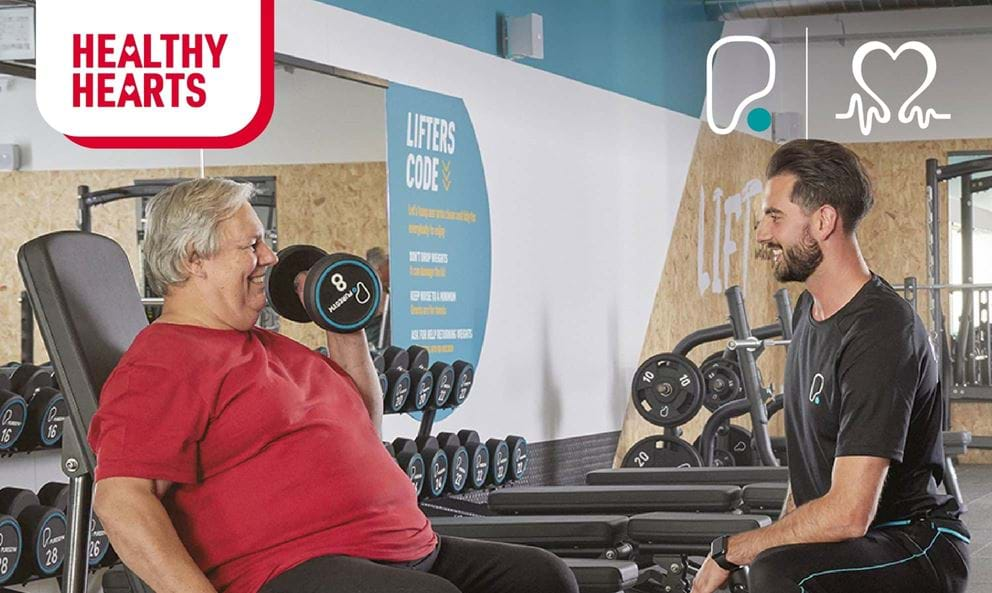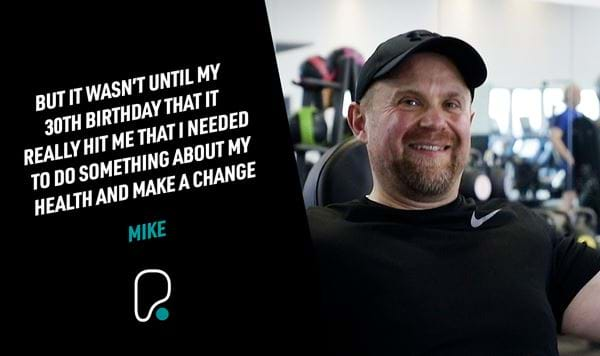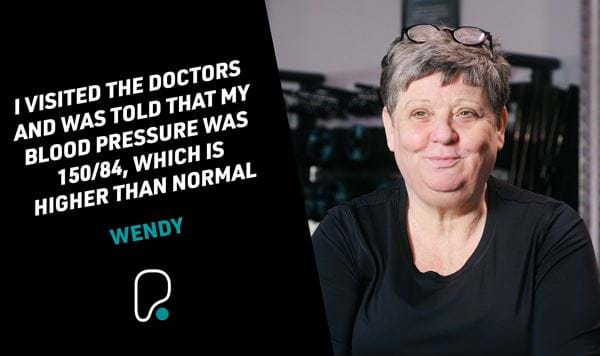Exercising when you have Health Concerns

Starting to exercise when you have health concerns may feel a little daunting. You may feel nervous, apprehensive, and unsure about how much exercise you can do without aggravating your health condition.
So, in this week’s educational blog, we’re talking all about starting new exercise routines when you have a health condition. As well as how to adapt exercise for you and how to know when to stop.
Is exercise a bad idea if you have a health condition or risk factor?
Unless you have been advised by your doctor or medical professional not to exercise, then you can safely exercise even if you have a health condition or risk factor.
Ruth Goss, a clinical nurse at the British Heart Foundation tells us that “regular exercise is essential for overall health, whether you have a health condition or not. It’s just about finding what’s right for you.”
Exercise has heaps of benefits – so, if you have health concerns, it can be helpful to include exercise as an essential part of your routine to look after your health. Not only can exercise improve your cardiovascular fitness and make you stronger and fitter, but it can also help to look after your heart health and mental wellbeing too.
Remember, it’s important to speak to your doctor about what’s right for you before starting any new exercise programme or regime. They will be able to give you some guidance on what exercise types you could try, what symptoms to look out for that indicate you should stop or what your heart rate range you should work within.
It’s also key to listen to your body when exercising and go at a pace that is right for you.
How to start a new exercise routine
Signing up for the Healthy Hearts Programme was a great first step to starting exercising. Our Healthy Hearts Programme was created with the experts at the British Heart Foundation to bring you a medically approved, structured programme that gradually eases you into gentle exercise over an 8-week period. There’s lots of options and exercise adaptations so you can work at a pace that is right for you and build you confidence in a fun and supportive setting.
If you have health concerns, it’s really important to gradually increase the amount of exercise you do – rather than going all in, too fast. Remember, slow and steady wins the race!
The F.I.T.T principle is a great way to keep track of how much exercise you’re doing, the intensity you’re working at and help you to gradually track your progress.
F.I.T.T stands for:
- Frequency: How often are you exercising per week?
- Intensity: How hard are you working in those workouts?
- Time: How long are you doing it for?
- Type: What kind of exercise is it? Is it an activity that increases your heart rate, or is it strength, balance or coordination focused instead?
If you have a health concern, when using the F.I.T.T principle to track your progress, try to only increase one factor at a time.
For example, if you start out walking 30 minutes to work 3 times a week, you could either:
- Increase the frequency: You may feel ready to start walking to work 4 times a week
- Increase the intensity: Could you try and walk at a slightly faster pace on those 3 walks a week
- Increase the time: Extend your route so it lasts a little longer on those 3 walks a week
If you have a health condition and aren’t confident about how much you can do, always talk to your doctor first. They might give you some advice on what to look for or what range your heart rate should stay within.
You can ask your doctor questions like:
- How will I know if I’m doing too much?
- Are there any exercises I should avoid?
- Can I do this specific programme or workout video?
Your doctor might want to keep an eye on your condition as you make lifestyle changes like this. For example, if you’re on medication, exercise might also lower your blood pressure – which may need to be monitored. Exercise can also affect your blood sugar, which they may want to check if you have a health condition like diabetes.
If you’re completely new to exercise, the experts at BHF also recommend starting small before trying anything new. Something like a daily walk every day and taking the stairs for a couple of weeks will get you to a place where you’re warmed up for a new routine. It’s also a great idea to do something you enjoy so that it becomes something you do for fun.
Adapting exercise for you
Exercise isn’t one size fits all. If you have a health condition or health concern that means that certain areas of your body can’t be under strain, or your doctor has told you to avoid certain movements or types of exercise – you can adapt exercise for you.
Adapting exercise means that you can still get all the amazing benefits of exercise, but in a safe and controlled way – modifying exercises to best suit your needs. That could be done by:
- Changing the exercise completely: You can swap the exercise to get the same benefit, but in a safer way for you. For example, if you struggle with mobility and balance, you could still target your lower body by swapping lunges for squats or the seated leg press machine.
- Modifying the exercise: You can also make some tweaks to exercises to reduce the intensity or impact it can have on your joints, muscles and/or cardiovascular system. This can be done by:
- Reducing the speed at which you perform an exercise (Eg. slowing down the tempo of the exercise)
- Reducing the range and depth of the exercise (Eg. not going as low in your squat or not stepping out as far in a side lunge)
- Take out any jumping or high impact movements (Eg. opting for step jacks instead of jumping jacks)
- Increasing the rest and recovery time between reps or sets (Eg. taking breaks whenever you need to let your body and muscles recover)
- Performing alternating reps to increase the rest time your muscles get (Eg. doing alternating bicep curls rather than both arms at the same time)
There are lots of adaptations that can be made, for example some people might experience pain or discomfort when they have to stand for prolonged periods of time. So, they could adapt exercise by trying cycling rather than running or doing floor strength work like Pilates instead of standing resistance exercises.
Ruth also explains that adapted exercise is particularly important for people with health conditions that can impact blood pressure. ‘People who have issues with their blood pressure might feel lightheaded when going from laying down to standing up during a routine’, says Ruth, ‘so they could opt to do standing knee crunches if there’s floor core work involved.’
If you’re new to exercise, or not sure where to start with adapting exercise - try these tips from the experts at the BHF:
- Always do modifications when starting something new, then build up when you feel stronger
- Once you find a few key exercises that you feel confident with, do those instead of harder ones during workout programmes
- Do half of what’s been proposed and then increase from there - for example 20 seconds of squats instead of 40 seconds
- Take days off in between workouts to recover
- During periods of ill health take time off from exercising until you’ve recovered
How much exercise should I be doing?
The government recommends at least 150 minutes of moderate-intensity activity a week. If you can do 30 minutes, five days a week, you’ll achieve that.
Moderate intensity means you should be getting warm and a little out of breath, but still be able to have a conversation. For some people, gardening or a walk could be moderate intensity. It’s very individual, and all about what kind of activity or exercise creates that reaction, rather than what you’re doing.
At first try to exercise for at least 10 minutes without stopping. 10 minutes, three times a day, is a good starting point. If you find it hard to do that, for example because you’ve been unwell, then 5 minutes is a good starting point.
When should I stop exercise?
If you experience any of these symptoms, stop exercising immediately:
- You’re so out of breath you can’t say your name easily
- Chest pain or any other physical pain what wasn’t there before (e.g jaw or arm pain)
- Tightness in the chest
- Light-headedness, nausea, or dizziness.
If these symptoms don’t settle after a few minutes, seek medical help.
If the symptoms get better when you stop exercising, try the exercise again another day, at a much lower intensity. If you try it again at a lower intensity and still get symptoms, this activity isn’t right for you. Make sure to speak to your doctor about what they’d suggest.
Even if you feel comfortable during exercise, it’s important to pace yourself and know your limits. If you try to do too much, because you’re feeling great on a particular day, you might end up pushing yourself too hard. Try to stick to your limit so you have energy for the rest of the day and over time, you’ll get to know what level of activity is appropriate and you can gradually increase it.
Want to learn more?
Interested in finding out more about exercise and heart health? The experts at the British Heart Foundation have created an extensive information hub to help you. [BHF to confirm on what resource and link they want including here]
Want to join the Healthy Hearts Programme?
If you’re not part of the Healthy Hearts Programme yet, join our 8-week programme designed to help you look after your heart health.[full marketing copy to be added about the programme when signed off]


